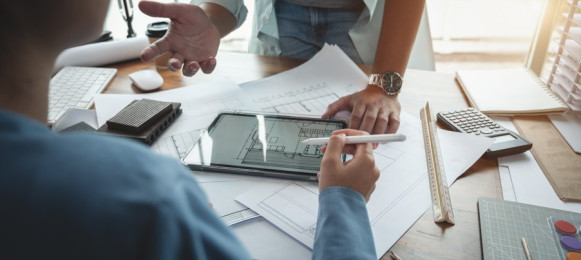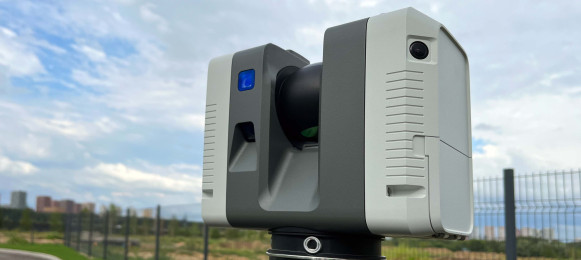The construction industry is undergoing a major change as it gradually moves towards a more dynamic future fuelled by data and the latest technology. At the heart of this transformation is a revolutionary concept - digital twins - virtual replicas of physical buildings. They are in effect, living simulations, constantly evolving alongside their real-world counterparts, but how did we get here?
The exact origin of the term "digital twin" is not totally clear, but the concept itself can be traced back to the early days of computer-aided design (CAD) in the 1960s. Back then, engineers began creating virtual representations of physical systems to simulate their behaviour and performance. However, the computational power and software limitations of the time prevented widespread adoption.
Fast forward to the 21st century, with the explosion of data and the rise of powerful computing resources and technologies such as 3D modelling, sensor integration and the Internet of Things (IoT) - we can see that they have all converged to create a perfect storm for the digital twin revolution. The term itself has been around since 2010 and it soon became a major buzzword across various industries, including construction.
But what exactly is a digital twin? In simple terms it is a virtual replica of a building, infrastructure project, or even an entire city, existing alongside its physical counterpart. This virtual model, constantly updated with real-time data and sensor information, is the essence of a digital twin. It's a dynamic representation that evolves alongside the physical asset it mirrors.
Think of it like a highly detailed video game where the player character is the building itself. Every brick, pipe and wire has a digital counterpart that can be monitored, analysed and even manipulated virtually before any physical changes occur on the construction site.
How digital twins are changing construction
As a result, digital twins are transforming construction in several key ways, most particularly in the way they deliver improved design and planning. 3D models within a digital twin allow for more accurate visualisation and clash detection. This means identifying and resolving potential conflicts between different building elements before construction even begins, saving time and money during the actual build.
Digital twins further serve as a central hub for project information, accessible to all stakeholders – architects, engineers, contractors and facility managers. This fosters better communication and collaboration, leading to a more streamlined construction process.
By simulating construction processes virtually, digital twins can also help optimise workflows, identify bottlenecks and schedule resources more efficiently. This translates to shorter project timelines and reduced costs.
Furthermore, sensors embedded within the physical structure can feed data back to the digital twin, allowing for real-time monitoring of the building's performance. This predictive maintenance capability helps identify potential issues before they escalate into major problems, saving money on repairs and downtime.
All this adds up to improved decision-making. The wealth of data captured by a digital twin provides valuable insights that can be used to make data-driven decisions throughout the building's lifecycle. This includes optimising energy usage, extending asset lifespan and even planning for future renovations or expansions.
While improved efficiency and cost savings are undeniable benefits of digital twins, their impact on construction extends far beyond the bottom line. Construction is a major contributor to global carbon emissions and waste generation. Digital twins offer a powerful tool to combat these issues.
By simulating the environmental impact of different design choices and construction materials within the virtual environment, architects and engineers can optimise for sustainability. This can involve minimising energy consumption through passive design strategies and selecting eco-friendly building materials.
Furthermore, digital twins can be used to monitor a building's energy performance in real-time once it's operational. This allows facility managers to identify areas for improvement and implement strategies to reduce energy consumption and the building's carbon footprint.
Additionally, digital twins can help streamline waste management throughout the construction process. Accurate material take-offs and optimised construction sequencing minimise waste generation at the source. Additionally, the digital twin can be used to track and manage waste disposal, ensuring responsible practices by promoting a more circular economy in construction.
Construction sites are inherently risky environments and digital twins can play a vital role in mitigating these risks and enhancing worker safety. By virtually simulating construction processes, potential hazards can be identified and addressed before workers even step onto the physical site. This includes simulating the use of heavy machinery, identifying potential falls from heights and ensuring safe access to different areas of the construction site.
Digital twins can also be used to develop and implement comprehensive safety protocols for the construction project. Workers can be trained in a virtual environment, familiarising themselves with the layout and potential hazards of the site before starting actual work. Additionally, digital twins can be integrated with real-time monitoring systems to track worker movements and identify areas where safety risks might be heightened. This allows for immediate intervention and proactive measures to ensure worker safety throughout the construction phase.
The construction industry faces the challenge of adapting to a rapidly changing world and digital twins offer a platform for continuous learning and improvement. By capturing and analysing data throughout the entire building lifecycle, from design and construction to operation and maintenance, valuable insights can be gleaned. These insights can then be used to inform future projects, leading to continuous improvement in design practices, construction methods and building performance.
Additionally, digital twins can serve as a valuable tool for planning future renovations or expansions. As a building ages and its needs evolve, the digital twin can be updated to reflect these changes. This allows for informed decision-making when planning modifications or upgrades, ensuring these changes are seamlessly integrated with the existing structure.
Most importantly, digital twins can act as a powerful communication tool, facilitating transparency and trust between all stakeholders involved in a construction project. The single source of truth housed within the digital twin ensures everyone has access to the latest information, from the design intent to the as-built conditions. This open flow of information fosters collaboration and minimises the risk of misunderstandings or communication gaps.
Furthermore, digital twins can be used to effectively communicate project progress to clients and stakeholders. Virtual walkthroughs and real-time data visualisations allow everyone to stay informed and engaged throughout the construction process. This level of transparency builds trust among all parties involved, leading to a more positive and collaborative construction experience.
The Future of Construction: Powered by Digital Twins
The potential of digital twins in construction is vast and continues to evolve. As technology advances and data collection becomes even more sophisticated, we can expect to see even more innovative applications emerge. From integrating with artificial intelligence for predictive maintenance to facilitating the adoption of modular construction methods, digital twins are poised to reshape the future of construction.
At AJ Digital, we are committed to staying at the forefront of these advancements. By offering a range of bespoke 3D modelling solutions, we empower our clients to harness the power of digital twins and navigate this exciting new era in construction.
It is why we offer a range of bespoke 3D modelling solutions specifically tailored to the construction industry such as scan to BIM Revit Modelling. This is a service which transforms laser-scanned data from existing buildings into a Building Information Model (BIM) using Revit software. This digital twin acts as an invaluable asset for renovation projects, facilitating clash detection, improving design coordination and enabling a more informed approach to construction planning.
Another service, Scope Gap Revit Modelling, helps where project information may be incomplete or missing specific elements. AJ Digital can bridge this gap by creating detailed Revit models for those elements, ensuring complete and coordinated project data. This eliminates communication gaps, reduces errors and streamlines the overall workflow.
A 3D model is not just about geometry. We enrich our models with real-world data such as installation dates, equipment specifications and even warranty information. Our team can collect this data directly on-site, integrating it seamlessly into the model. This enriched data transforms into a powerful facility management tool for efficient maintenance scheduling, asset tracking and better decision-making throughout the building's lifecycle.
We believe that by embracing digital technologies, we can build a future where construction is not just efficient and cost-effective, but also sustainable, safe and future-proofed. By embracing digital twins and bespoke 3D modelling solutions, the construction industry can move towards a future of greater efficiency, collaboration and sustainability. At AJ Digital, we are committed to being at the forefront of this exciting revolution, to help our clients build smarter and better.



